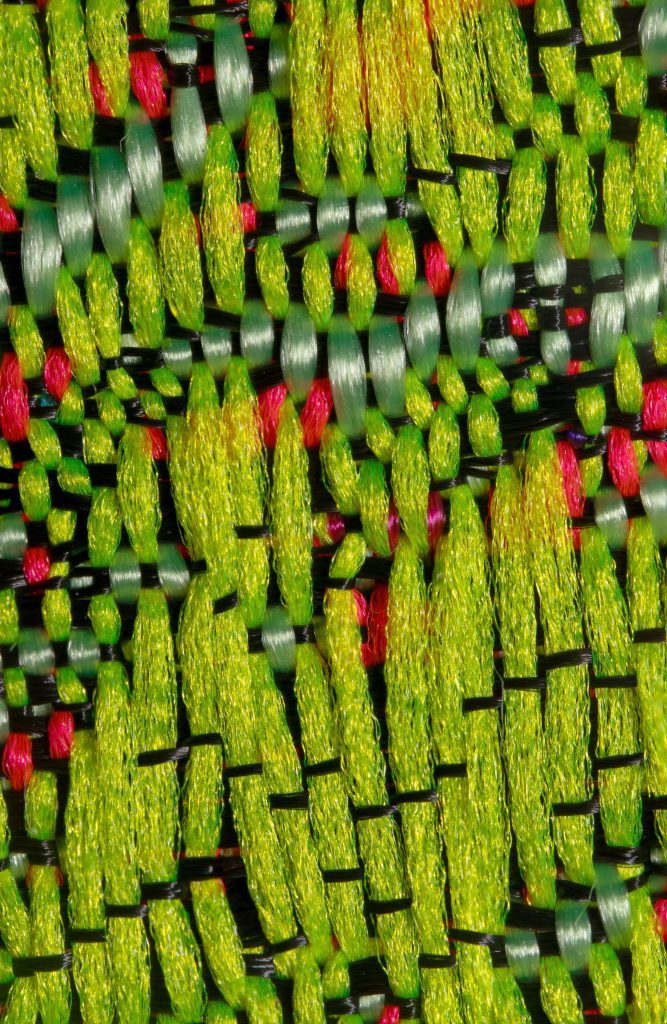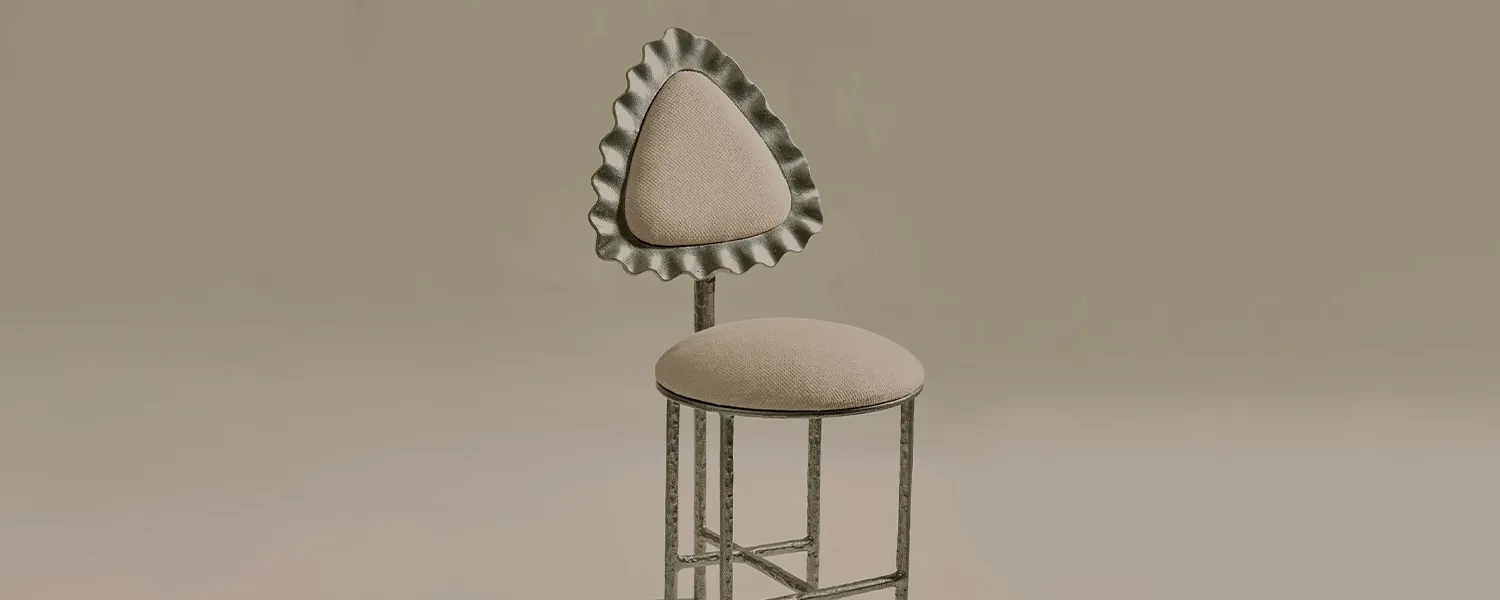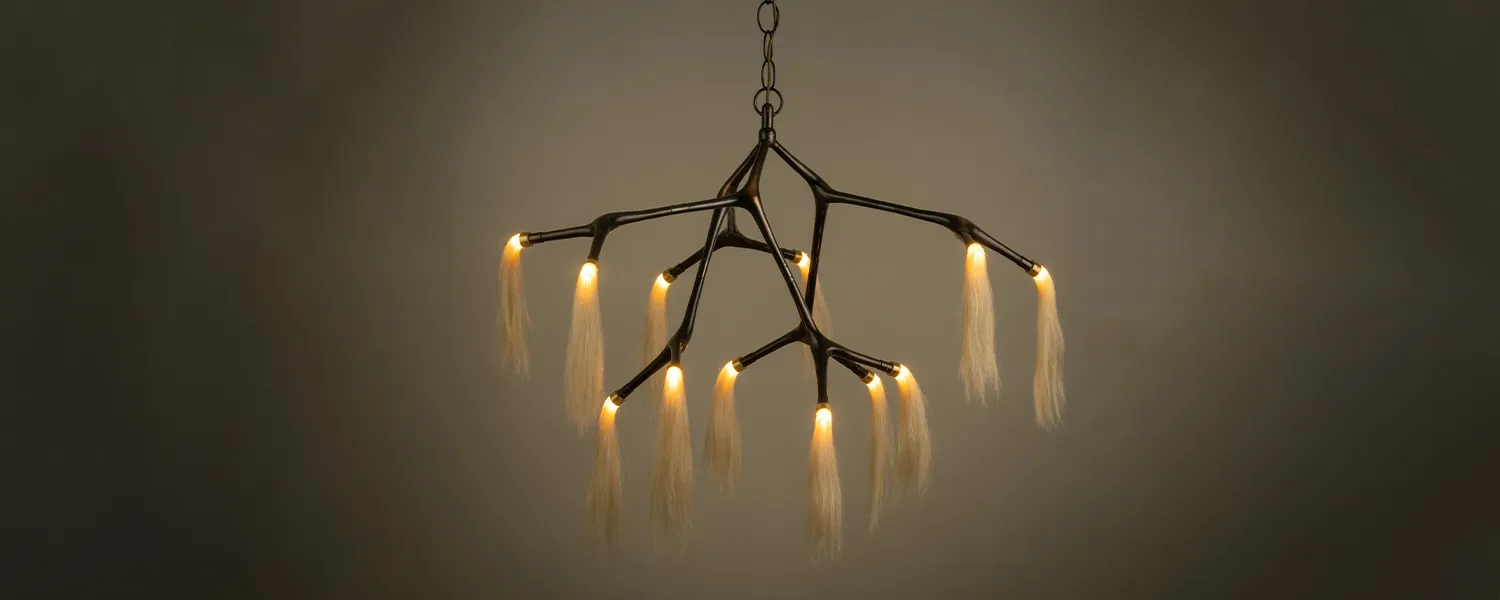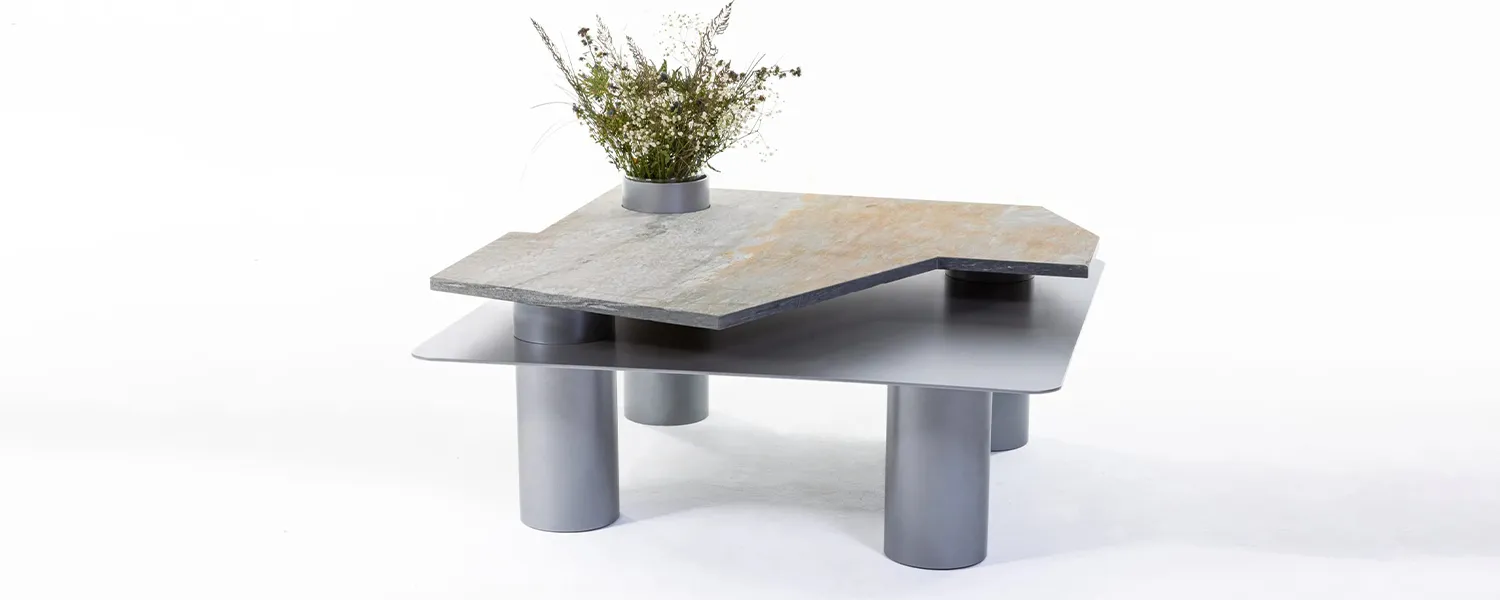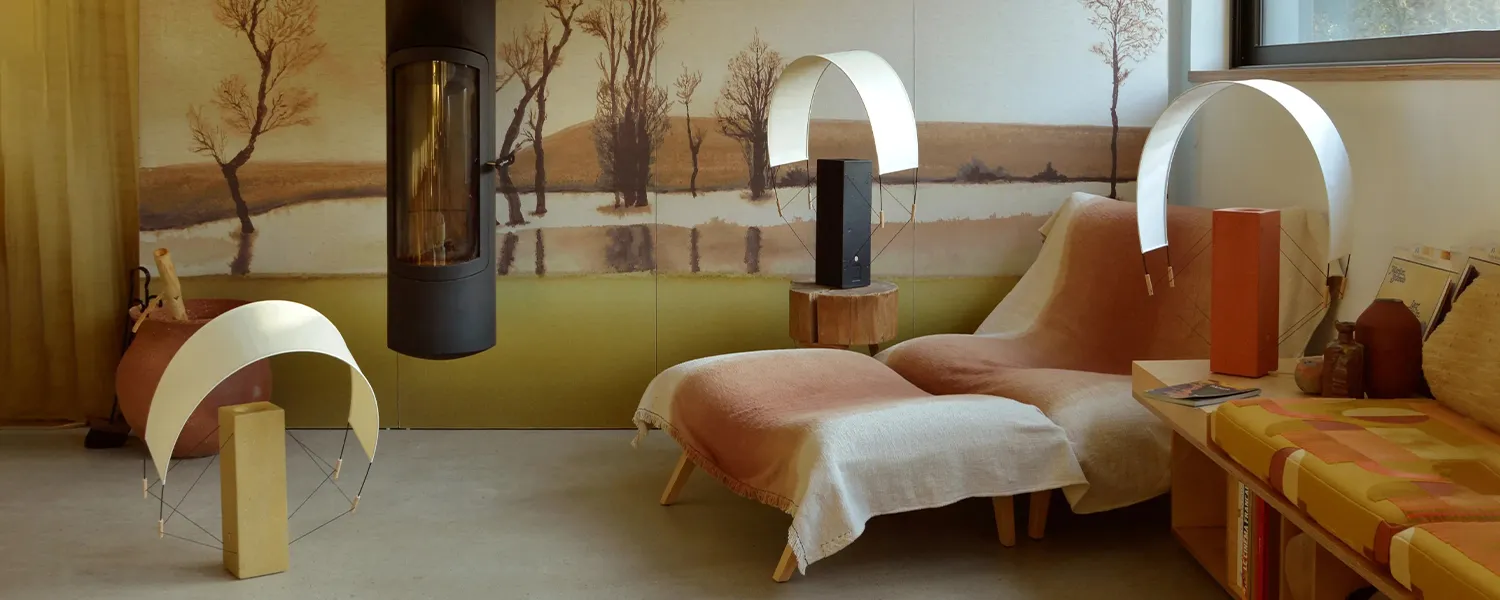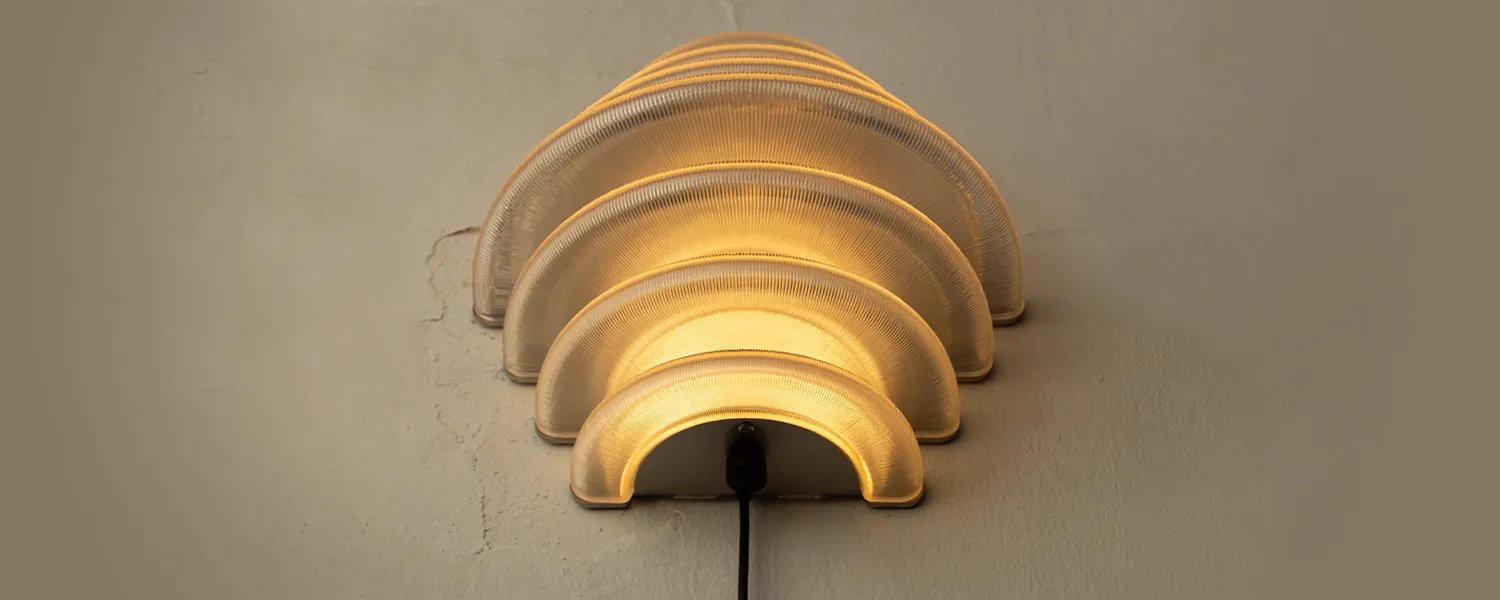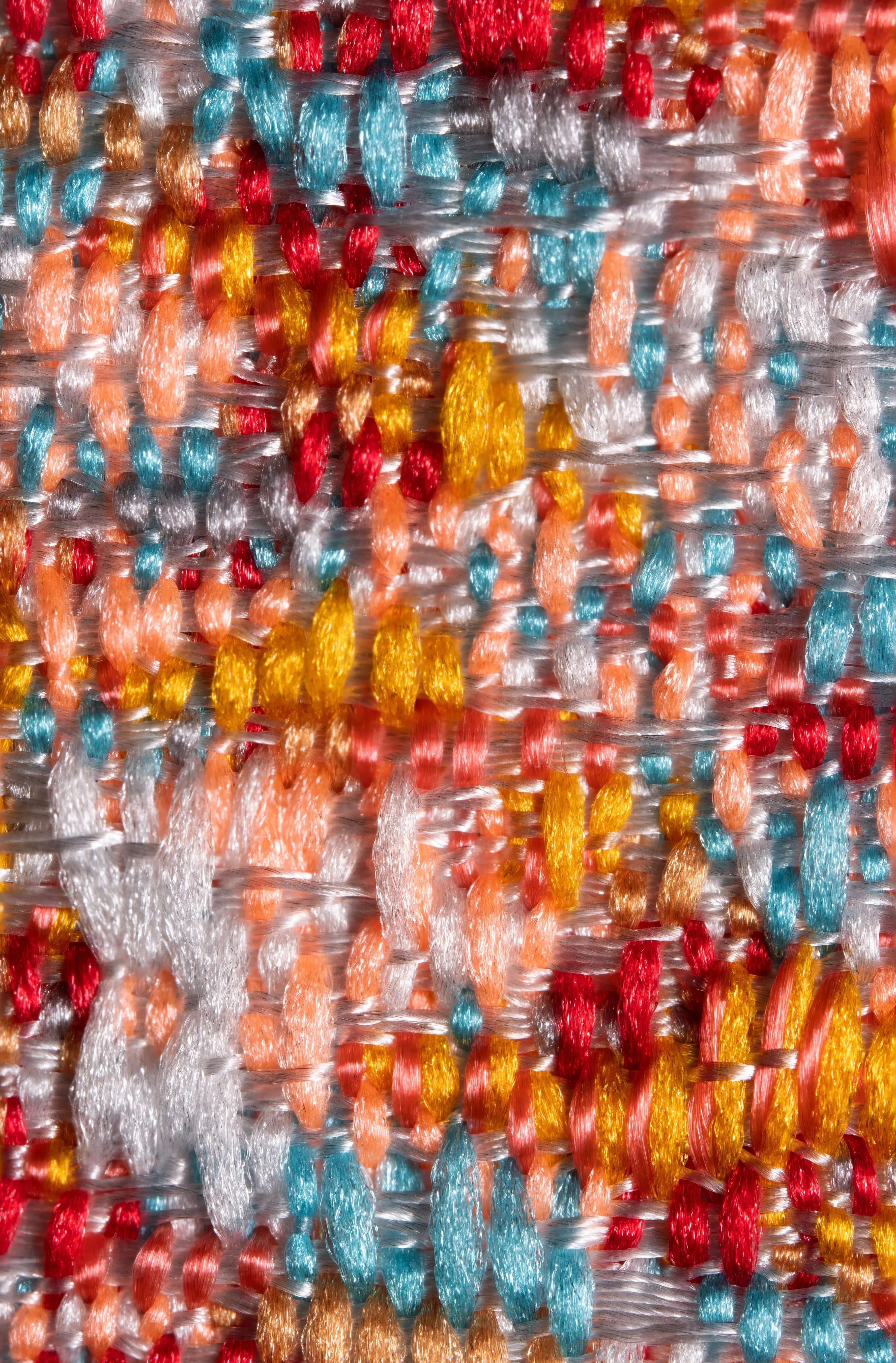
Jacquard Weaving: High-Resolution Weaving Ahead of Its Time and Poised for the Future
Jacquard weaving, a technology introduced in the early 19th century, has consistently demonstrated a remarkable ability to stay ahead of its time. This intricate method of textile production, which uses a series of punched cards to control the weaving process, marked a significant leap forward in the industrialization of textiles. It not only revolutionized the production of patterned fabrics but also laid the groundwork for the development of early computing.
ADORNO is proud to feature several designers who harness the power of Jacquard weaving to produce stunning creations. Lucas Gutierrez achieves incredible results with Jacquard, creating tapestries that appear almost three-dimensional and encourage contemplative moments as viewers become almost mesmerized by his hypnotic designs. Ishraq Zraikat uses Jacquard weaving to create wall hangings aptly reminiscent of pixelation, offering opportunities for reflection and immersion. Emma Terweduwe crafts bold, colorful blankets that are strikingly graphic, showcasing the versatility and creativity possible with Jacquard weaving. Read on to discover the noteworthy history of Jacquard weaving and explore what the future holds for this fascinating technique.
Historical Significance and Technological Innovation
The Jacquard loom, invented by Joseph Marie Jacquard in 1804, transformed textile manufacturing by enabling the automated production of complex patterns. Before its invention, producing such intricate designs required skilled weavers to painstakingly manipulate individual threads by hand. The Jacquard mechanism replaced this labor-intensive process with a system that could automatically control the weaving of each individual warp thread, using punched cards to dictate the pattern. This innovation not only increased production speed and efficiency but also reduced the potential for human error, ensuring more consistent quality.
The impact of Jacquard’s invention extended beyond textiles. The punched card system used to control the loom was a precursor to the data storage and processing techniques, based on binary code, that would later be integral to computer technology. In fact, Charles Babbage, often referred to as the “father of the computer,” was inspired by the Jacquard loom’s use of punched cards in designing his Analytical Engine, an early conceptual model of a programmable computer.






What Differentiates Jacquard Weaving from Other Techniques?
The key difference between Jacquard weaving and other weaving techniques lies in its ability to control each warp thread individually. Traditional looms operate by raising and lowering groups of warp threads together, limiting the complexity and precision of the patterns they can produce. In contrast, the Jacquard loom’s use of punched cards allows for each warp thread to be raised or lowered independently, enabling the creation of highly intricate and detailed patterns.
This individual control of warp threads is what allows Jacquard weaving to achieve such ‘high resolution’ images and details in textiles. Just as a high-resolution digital image is composed of many small pixels, a high-resolution Jacquard fabric is made up of numerous individually controlled threads, each contributing to the overall pattern. The finer the threads and the more precisely they are controlled, the more detailed the resulting image can be. This level of detail and complexity is almost impossible to achieve with traditional weaving methods, making Jacquard weaving uniquely suited for producing elaborate designs.




Contemporary Relevance and Technological Advancements
Today, Jacquard weaving remains a cornerstone of the textile industry, combining traditional craftsmanship with cutting-edge technology. Modern Jacquard looms are computerized, offering even greater precision and versatility. These advanced machines can produce an astonishing variety of patterns and textures, meeting the demands of fashion, interior design, and technical textiles.
The integration of digital technology into Jacquard weaving has opened up new possibilities for customization and efficiency. Designers can create intricate patterns using computer software, which are then seamlessly translated into woven fabrics by the loom. This digital interface allows for rapid prototyping and iterative design, enabling designers to experiment and innovate more freely.
Moreover, the advent of smart textiles and wearable technology is pushing the boundaries of what Jacquard weaving can achieve. By embedding conductive threads and sensors into fabrics, manufacturers can create textiles that interact with the environment or the wearer’s body, providing functionality beyond traditional clothing. These innovations are paving the way for applications in health monitoring, sports performance, and even responsive environments.






The Future of Jacquard Weaving
Looking ahead, the future of Jacquard weaving is bright and filled with potential. As digital technology continues to evolve, Jacquard looms are likely to become even more sophisticated, offering unparalleled precision and customization. Advances in materials will also play a crucial role, enabling the integration of new fibers and coatings that enhance the functionality and durability of woven textiles.
One exciting prospect is the development of sustainable and eco-friendly textiles through Jacquard weaving. By using recycled materials and reducing waste in the production process, manufacturers can create high-quality fabrics with a lower environmental impact. This aligns with the growing consumer demand for sustainable fashion and responsible manufacturing practices.
Additionally, the rise of the Internet of Things (IoT) presents intriguing opportunities for Jacquard weaving. Smart textiles embedded with sensors and connectivity features can interact with other devices, creating a seamless integration of technology into everyday life. Imagine clothing that can adjust its temperature based on the weather or upholstery that responds to changes in lighting and sound.
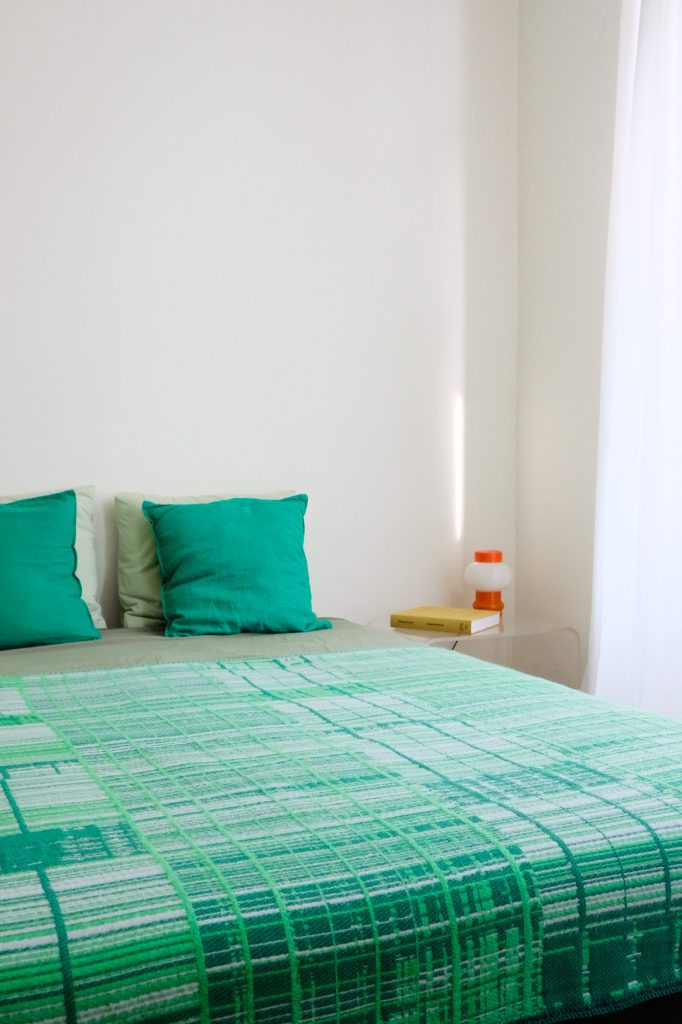

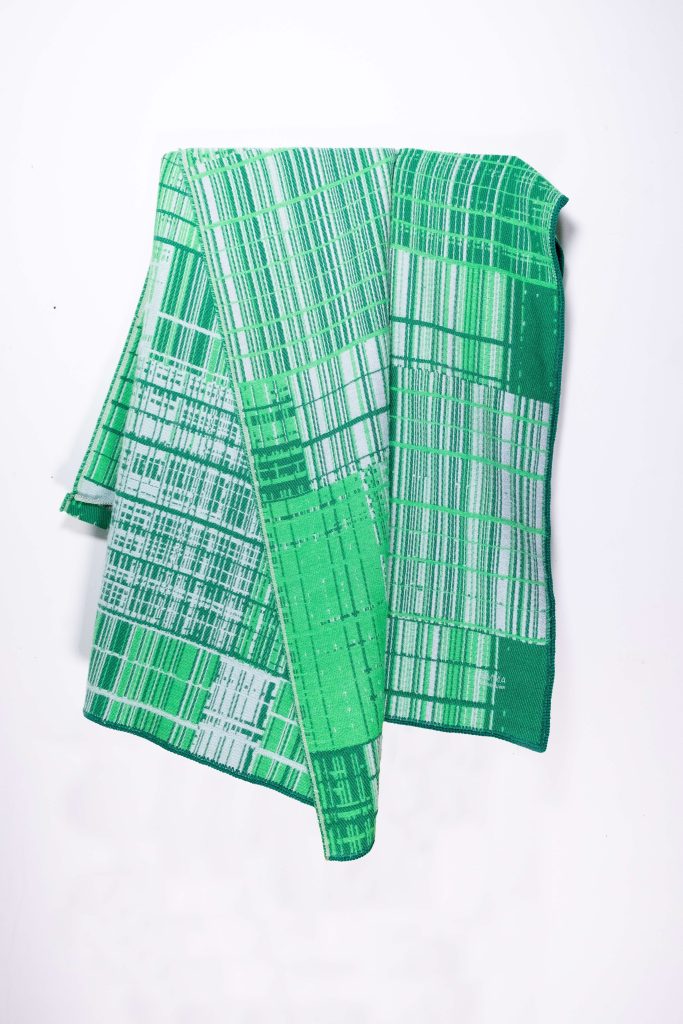



Final Thoughts
Jacquard weaving has always been a technology ahead of its time, from its revolutionary beginnings in the 19th century to its current status as a leader in digital textile manufacturing. Its ability to produce highly detailed, ‘high resolution’ images sets it apart from other weaving techniques, underscoring its unique precision and versatility. As we look to the future, the potential for innovation in Jacquard weaving is immense. By embracing new technologies and sustainable practices, this age-old technique will continue to evolve, maintaining its relevance and leading the way in the textile industry. The story of Jacquard weaving is a testament to the power of innovation and the enduring impact of a truly transformative invention.
-

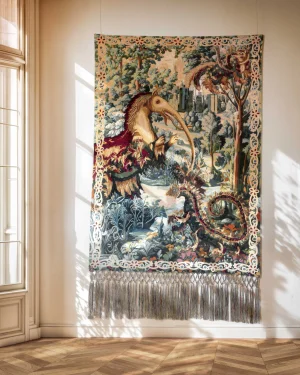 Arquà Manuscript Tapestry I€6.000 incl. tax
Arquà Manuscript Tapestry I€6.000 incl. tax -

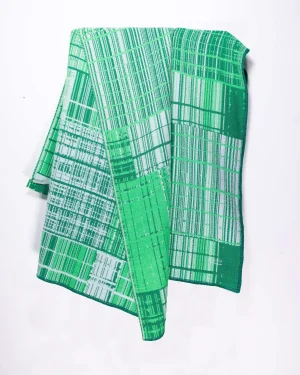 Beyond Bold – Jacquard Woven Emerald Blanket€625 incl. tax
Beyond Bold – Jacquard Woven Emerald Blanket€625 incl. tax -

 Organic Cotton/viscose Tablecloth€210 incl. tax
Organic Cotton/viscose Tablecloth€210 incl. tax -

 Bow-shaped Pillowcase€105 incl. tax
Bow-shaped Pillowcase€105 incl. tax -

 Abstract Wool Blanket€379 incl. tax
Abstract Wool Blanket€379 incl. tax -

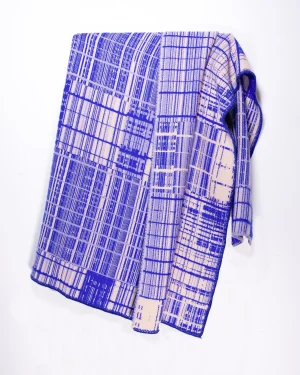 Beyond Bold – Jacquard-woven Organic Cotton Blanket€581 – €625 incl. tax
Beyond Bold – Jacquard-woven Organic Cotton Blanket€581 – €625 incl. tax -
Piece on sale

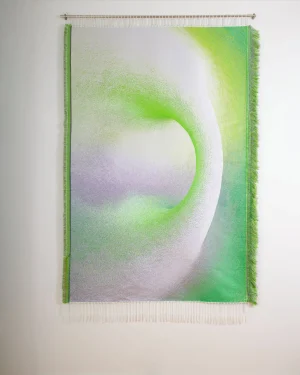 Light Mode 280 — Modern Foliage | Jacquard Woven Tapestry€6.143 incl. tax
Light Mode 280 — Modern Foliage | Jacquard Woven Tapestry€6.143 incl. tax -
Piece on sale

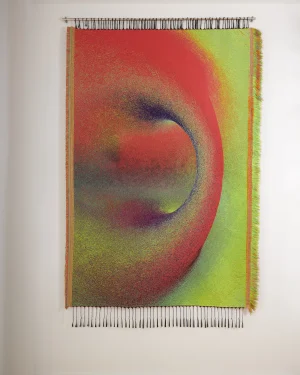 Heat 1 — Tinted Tango | Jacquard Woven Tapestry€6.143 incl. tax
Heat 1 — Tinted Tango | Jacquard Woven Tapestry€6.143 incl. tax -
Piece on sale

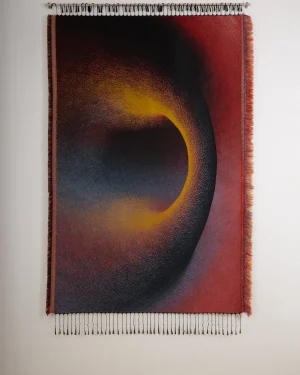 Original — Hue Foundation | Jacquard Woven Tapestry€6.143 incl. tax
Original — Hue Foundation | Jacquard Woven Tapestry€6.143 incl. tax



